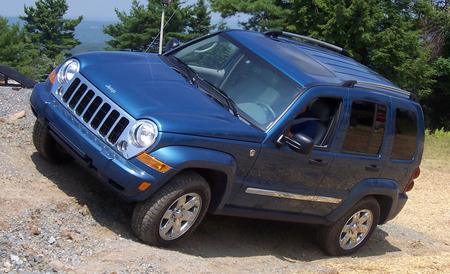When friends ask us which SUV to buy, we often counter with an interrogation aimed at uncovering the inevitable truth that they never plan to go off-road and that they only need to haul a dog or two in the back. We always recommend a better-driving, more-efficient sport wagon to these folks, who then inevitably ignore us. Those who allege to be avid skiers in need of both ground clearance and all-wheel drive are often prescribed a new cute-ute. These hot-selling car-based tall wagons delete the rock-scaling hardware that no one uses anyway, so they’re lighter, nimbler, and more efficient. The Ford Escape, the Toyota RAV4, and the Honda CR-V are favorites. For our few Grizzly Adams outdoorsmen rock-climber pals, we prescribe a Jeep.
Jeep hopes we’ll recommend its latest RAV4/CR-V-class offering to a wider circle of friends. But is this possible? Can a “real Jeep” be pared down and refined for ride comfort and sprightly driving dynamics? If so, can it still tackle the Rubicon Trail as every prior Jeep has? Must it?
We’ll find out this spring, when the ’02 Jeep Liberty rides into showrooms on — Stop the presses! — an independent front suspension with rack-and-pinion steering.
The unequal-length-control-arm setup employs long, stout cast-iron lower arms and boxed, stamped uppers. The coil-sprung, live-axle rear suspension uses trailing links (boxed with smooth bottoms so as not to snag in the heavy stuff) and a central A-arm for lateral location. A full eight inches of suspension travel is provided front and rear. Driveline skid plates come standard with four-wheel drive; additional armor is packaged with the Up-Country suspension. Approach and departure angles are best in class, and low-range gearing comes with either the part-time Command-Trac or full-time Selec-Trac four-wheel-drive system. When operating in low range, the ABS allows more slip, the idle speed is increased a bit, and in-gear starting is enabled. In other words, Jeep solemnly swears its newcomer has mastered the Rubicon and survived the same military-spec 15,000-mile off-road duty cycle to which all Jeeps are subjected.
Okay, so it’s “at liberty” to go anywhere other Jeeps can go. But is it quiet, comfy, quick, light, and nimble? Well, yes, yes, kinda, no, and sorta.
Refinement and noise abatement were high priorities during the development of this new “KJ” model. The front suspension is far better isolated than a live axle can be, and two new engines advance the state of the underhood art by several decades. Chrysler’s DOHC 16-valve, 2.4-liter, balance-shafted four makes its north-south debut here. It spins its 154 hp and 167 pound-feet of torque through a five-speed manual with far more grace than the now-pastured 2.5-liter Jeep four ever did. At the top of the ticket is a brand-new SOHC 12-valve, 3.7-liter V-6. It’s basically a 90-degree, 4.7-liter V-8 minus two pots, with a balance shaft and a split-pin crank to ensure smooth, even firing. Output is a healthy 210 hp and 225 pound-feet of torque. The V-6-powered Ford Escape will outdrag it, but not by much.
Inside, the new Liberty is exceptionally roomy and comfortable. The floor is lower and the roof is higher than in the original-recipe XJ Cherokee, which means that within the same interior length the KJ offers five more cubic feet of space in front, nine more in back. The seats are high, properly angled and bolstered, and truly comfortable. And the spare now rides outside on a swing-out tailgate, leaving room for 32 cubic feet of cargo (or 70 with the rear seat folded). Pull the handle to open the swing gate, and presto, the flip-up glass window opens automatically.


Leave a Reply